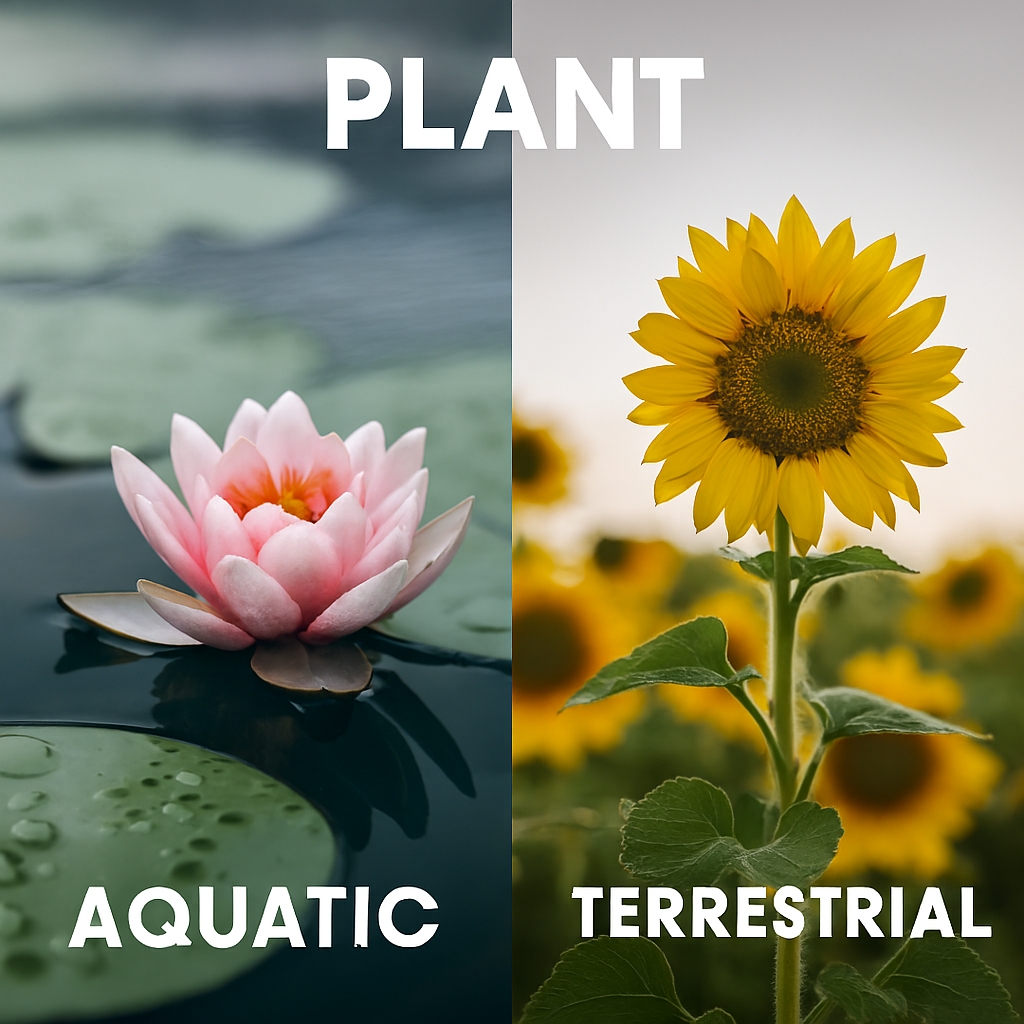Tech Precision Without Presence
Infrastructure That Thinks
Across coastlines, deserts, tundras, and floodplains, a new class of technologies is quietly redefining how we observe, intervene, and inhabit the planet. Drones, satellite composites, and remote-operated systems are no longer speculative tools—they’re active participants in environmental transformation. These innovations are enabling us to manage fragile ecosystems, build resilient infrastructure, and respond to climate volatility with unprecedented precision. What was once inaccessible is now observable. What was once inhospitable is now adaptable.

Aerial Intelligence in Fragile Zones
Modern drones are equipped with multispectral sensors, thermal cameras, and AI-driven navigation systems that allow them to monitor ecosystems without intrusion. They can detect subtle changes in vegetation health, track sediment movement along shorelines, and identify illegal land use in protected areas. In marine environments, drones are used to map coral bleaching and monitor fish populations. Inland, they help locate underground water reserves and assess soil degradation. Their ability to operate autonomously across vast terrains makes them indispensable for environmental surveillance. Drones also support ecological restoration by dispersing native seeds in degraded zones. Their data feeds into real-time dashboards used by conservation teams and urban planners. These aerial systems are increasingly solar-powered, extending their operational range. In disaster zones, drones provide rapid damage assessments and guide emergency response. Their footage is used to validate environmental claims and inform legal action. Drones are becoming the eyes of ecological accountability.
Satellite Composites and Adaptive Architecture
Satellite materials—engineered for extreme durability and minimal environmental impact—are transforming how we build in volatile regions. These composites resist corrosion, absorb seismic shocks, and maintain structural integrity under thermal stress. Originally developed for aerospace applications, satellites are now used in seawalls, modular housing, and mobile research stations. In coastal zones, satellite barriers flex with tidal forces, reducing erosion without disrupting marine life. Inland, satellite shelters withstand wildfires and flash floods. Their reflective surfaces reduce heat absorption, lowering energy demands. Satellite platforms are also used in floating infrastructure, supporting aquaculture and offshore energy systems. These materials are recyclable and chemically inert, minimizing ecological footprint. Satellite bridges connect isolated communities without damaging river ecosystems. Their modularity allows for rapid deployment in disaster recovery and climate migration. Satellites are redefining what sustainable infrastructure can be—resilient, responsive, and regenerative.

Remote Systems and Autonomous Repair
Remote-operated technologies are enabling us to manage and repair environments without direct human presence. These systems include underwater drones, robotic reforesters, and AI-guided maintenance bots. In coastal regions, remote vessels monitor salinity, temperature, and pollution levels. Inland, autonomous tractors optimize crop rotation and soil health. These systems operate continuously, adjusting their behavior based on sensor feedback. They reduce human exposure to hazardous conditions and extend the reach of environmental stewardship. Remote-controlled bulldozers build firebreaks in vulnerable forests. Submersible drones repair coral structures using biodegradable adhesives. These technologies are also used in archaeological preservation, accessing sites too fragile for human entry. Their integration with satellite networks allows for coordinated global response. Remote systems are becoming more energy-efficient, often powered by solar or kinetic energy. They represent a shift from reactive intervention to proactive care.
Coastal Zones as Living Systems
Coastal environments are dynamic interfaces between land and sea, and they’re increasingly shaped by intelligent infrastructure. Drones monitor tidal shifts and sediment transport, informing the placement of satellite buffers and mangrove restoration zones. Remote systems reseed oyster beds and maintain underwater sensors that track nutrient flows. These interventions are designed to work with natural rhythms rather than against them. Floating platforms built from satellite composites serve as emergency shelters and research hubs. Drones assist in evacuations and post-storm assessments. Remote-controlled systems manage waste and energy in isolated coastal communities. These technologies support biodiversity by restoring habitats and reducing human disturbance. Coastal adaptation is becoming a continuous process, guided by real-time data and modular design. The goal is not to dominate the shoreline, but to coexist with its fluctuations.

Inland Resilience and Ecological Memory
Inland regions face challenges from drought, deforestation, and soil exhaustion. Drones are used to map groundwater depletion and identify areas suitable for reforestation. Satellite tanks store rainwater and resist contamination, supporting agriculture in arid zones. Remote systems manage irrigation schedules based on weather forecasts and soil sensors. These technologies enable habitation in regions previously considered unviable. Autonomous bots remove invasive species and restore native vegetation. Satellite roads connect remote communities without fragmenting wildlife corridors. Drones track animal migrations and alert conservation teams to poaching risks. These tools support ecological memory—the ability of landscapes to recover and retain biodiversity. Inland resilience is no longer a theoretical goal—it’s being built through layered, adaptive systems.
Habitation Beyond the Edge
Extreme environments—deserts, tundras, floodplains—are becoming testbeds for adaptive living. Satellite shelters resist heat, cold, and moisture, enabling habitation in places once deemed uninhabitable. Drones scout terrain for settlement and monitor environmental impact. Remote systems regulate air quality, energy use, and waste management. These technologies reduce the ecological cost of expansion. Floating Satellite platforms are used in flood-prone zones, while Arctic stations rely on Satellite insulation to maintain thermal stability. Desert communities use drones to manage solar farms and water harvesting systems. Habitation is becoming modular and mobile, capable of responding to environmental shifts. These innovations support climate migration and disaster recovery, offering dignity and autonomy to displaced populations. Living beyond the edge is no longer a frontier fantasy—it’s a reality shaped by precision and care.

Responsive Infrastructure and Environmental Memory
Infrastructure is no longer static—it’s becoming responsive, adaptive, and memory-driven. Satellite composites are engineered to flex under stress, absorb environmental feedback, and maintain integrity across decades. Drones feed real-time data into infrastructure management systems, allowing for predictive maintenance and structural recalibration. Remote-operated units perform diagnostics and repairs without human intervention. In coastal zones, Satellite seawalls adjust to tidal pressure and sediment flow. Inland, modular Satellite housing adapts to seasonal temperature shifts. These systems remember past conditions and anticipate future ones. Environmental memory is embedded in the materials themselves—through sensor arrays, thermal logs, and stress maps. This allows infrastructure to evolve with its surroundings rather than resist them. Responsive design reduces ecological disruption and extends lifespan. It also supports decentralized governance, allowing communities to manage their own systems. Infrastructure becomes a living archive of environmental change. It tells stories through wear patterns, data trails, and adaptive behavior. This shift marks a departure from extractive construction toward regenerative architecture.
Autonomous Networks and Decentralized Stewardship
The rise of autonomous environmental networks is decentralizing stewardship across regions and ecosystems. Drones, sensors, and remote systems form interconnected webs that monitor, respond, and learn without centralized control. These networks operate across borders, linking coastlines, forests, and urban zones. They share data in real time, enabling coordinated action against climate threats. Satellite nodes serve as anchor points—housing sensors, energy systems, and communication hubs. Remote-operated units maintain these nodes, ensuring continuity and resilience.
Decentralized stewardship empowers local communities to manage their environments with precision and autonomy. It reduces dependence on distant institutions and bureaucratic delays. These networks are designed to be self-healing—rerouting data, repairing damage, and adapting protocols as needed. They also support transparency, allowing public access to environmental metrics. Autonomous networks are not just technical systems—they’re social infrastructures. They reflect a shift toward participatory ecology, where everyone becomes a steward.
Ecological Forecasting and Strategic Adaptation
Forecasting is no longer limited to weather—it now includes ecological shifts, resource availability, and biodiversity trends. Drones collect multispectral data that reveals subtle changes in plant health, soil composition, and water quality. Remote systems analyze this data to predict ecological tipping points. Satellite installations are built with future stressors in mind—thermal expansion, flood risk, and seismic activity. These forecasts guide strategic adaptation, allowing planners to preempt damage and optimize interventions.
Predictive models simulate scenarios across decades, helping communities prepare for migration, infrastructure upgrades, and conservation efforts. Ecological forecasting is becoming a core discipline in urban planning, agriculture, and disaster response. It integrates climate science, AI, and local knowledge. These forecasts are updated continuously, reflecting real-time conditions and long-term trends. Strategic adaptation becomes a dynamic process—responsive, inclusive, and forward-looking. It’s not about resisting change, but navigating it with clarity and care.

Biodiversity as Infrastructure
Biodiversity is increasingly treated as infrastructure—essential, measurable, and maintainable. Drones track animal populations, migration routes, and habitat health. Remote systems manage breeding programs, seed banks, and rewilding efforts. Satellite structures are designed to support biodiversity—providing nesting zones, shade, and water access.
In coastal zones, artificial reefs built from Satellite composites restore marine ecosystems. Inland, Satellite towers host pollinator habitats and bird perches. These interventions are not decorative—they’re functional. Biodiversity enhances resilience, stabilizes ecosystems, and supports human wellbeing. Treating biodiversity as infrastructure shifts policy and funding priorities. It embeds ecological value into construction, agriculture, and urban design. These systems are monitored continuously, ensuring accountability and adaptive management. Biodiversity becomes part of the built environment—visible, valued, and protected.
Aerial Drones – Precision Without Disturbance
Modern drones are redefining how we observe and interact with fragile ecosystems. Equipped with multispectral sensors, thermal imaging, and AI-guided flight paths, they can scan coastlines, forests, and agricultural zones without physical intrusion. Their ability to hover, map, and transmit data in real time makes them ideal for tracking erosion, vegetation stress, and illegal land use. In marine environments, drones monitor coral bleaching and surface pollution. Inland, they identify drought zones and guide reforestation efforts.
Their agility allows for rapid deployment in disaster zones, where they assist with damage assessments and search-and-rescue operations. Drones also support precision agriculture, optimizing irrigation and reducing chemical runoff. Increasingly solar-powered, they extend their operational range while minimizing environmental impact. These aerial systems are not just tools—they’re extensions of ecological awareness, offering a bird’s-eye view of change and continuity.
Underwater Remote Vehicles – Insight Beneath the Surface
Beneath the waves, remote-operated vehicles (ROVs) are transforming how we understand aquatic ecosystems. These submersible drones navigate coral reefs, deep-sea trenches, and submerged infrastructure with high-resolution cameras and sonar mapping. They detect changes in water chemistry, track fish populations, and inspect underwater cables and pipelines. ROVs are used to assess damage after oil spills and to monitor the health of marine protected areas.
Their ability to operate in low-visibility and high-pressure environments makes them indispensable for oceanic research and restoration. Some are equipped with robotic arms for sample collection or reef repair using biodegradable adhesives. These vehicles reduce the need for human divers in hazardous conditions and extend our reach into previously inaccessible zones. Underwater remote systems are not just observers—they’re caretakers of submerged worlds, offering granular insight into the planet’s most mysterious ecosystems.

Satellite Systems – Macro-Scale Environmental Continuity
Orbiting silently above, satellites provide a global lens on environmental transformation. They track deforestation, glacial retreat, ocean currents, and atmospheric pollutants across continents and decades. Equipped with infrared, radar, and hyperspectral imaging, satellites detect subtle shifts in temperature, moisture, and land use. Their data supports climate modeling, disaster forecasting, and biodiversity mapping. Satellites are essential for monitoring remote regions where ground access is limited or impossible. They also validate local observations, creating layered datasets that inform policy and planning. These systems operate continuously, offering temporal depth and spatial breadth. Satellite networks are increasingly integrated with ground-based sensors and aerial drones, forming a recursive feedback loop. They are the backbone of planetary-scale environmental intelligence—quiet, persistent, and profoundly revealing.
Ground-Based Sensor Arrays – The Pulse of the Landscape
While drones and satellites offer expansive views, ground-based sensors provide intimate, real-time data from the soil, water, and air. These arrays measure temperature, humidity, pH, seismic activity, and pollutant levels. Deployed in forests, wetlands, farms, and urban zones, they capture the micro-rhythms of ecological change. Sensor networks are often embedded in Satellite infrastructure, creating smart buildings, bridges, and seawalls that respond to environmental stress.
These systems alert communities to flood risk, drought onset, or pollution spikes. They also support precision farming and habitat restoration. Ground sensors are increasingly autonomous, powered by solar or kinetic energy and connected via mesh networks. Their data feeds into predictive models and adaptive management systems. These arrays are the heartbeat of environmental stewardship—quiet, continuous, and deeply embedded in place.

Autonomous Surface Vessels – Intelligence on the Waterline
Autonomous surface vessels (ASVs) operate across lakes, rivers, and coastal zones, collecting data and performing interventions without crew. These craft are equipped with sonar, LIDAR, and water sampling systems. They monitor salinity, turbidity, and pollutant levels while navigating complex currents. ASVs are used to reseed oyster beds, map sediment transport, and inspect submerged infrastructure. Their low wake and electric propulsion minimize ecological disruption. Some are designed to deploy underwater drones or floating sensors, acting as mobile hubs in aquatic networks. ASVs extend stewardship to the water’s surface—bridging aerial and subaquatic systems with precision and care.
High-Altitude Platforms – Persistent Sky-Based Observation
High-altitude platforms (HAPs), including solar-powered balloons and stratospheric gliders, offer long-duration surveillance from above the weather layer. Unlike satellites, they can hover over specific regions for weeks or months. HAPs carry environmental sensors, communication relays, and imaging systems. They’re used to monitor wildfire spread, atmospheric composition, and migratory bird patterns. Their altitude allows for wide coverage without orbital drift. These platforms are increasingly autonomous, adjusting altitude and position based on environmental feedback. HAPs represent a middle tier in the vertical stack of observation—persistent, flexible, and symbolically perched between Earth and orbit.
Bio-Integrated Devices – Living Sensors in the Field
Bio-integrated devices blur the line between technology and biology. These include sensor-equipped animals, plant-embedded microchips, and microbial data loggers. Tagged birds and marine mammals transmit location and environmental data as they move through ecosystems. Trees embedded with moisture sensors signal drought stress before visible symptoms appear. Soil microbes engineered to fluoresce under chemical exposure act as early-warning systems for contamination. These devices offer intimate, embodied insight into ecological health. They decentralize observation, turning living organisms into active participants in environmental monitoring. Bio-integrated systems challenge traditional boundaries—inviting us to see technology as symbiotic rather than separate.

Edge AI Modules – Onsite Decision-Making Without the Cloud
Edge AI modules process environmental data locally, reducing latency and dependence on centralized servers. Installed in Satellite infrastructure, drones, or sensor arrays, these units analyze patterns, detect anomalies, and trigger interventions in real time. For example, an edge module in a flood-prone zone might activate pumps or send alerts based on rainfall and soil saturation. In agricultural fields, edge AI adjusts irrigation based on plant stress and weather forecasts. These systems operate independently, even in low-connectivity regions. They represent a shift toward distributed intelligence—where decision-making is embedded in place, not abstracted to distant networks.
Disaster Recovery as Ecological Opportunity
Disasters are moments of rupture—but also opportunities for ecological renewal. Drones provide rapid assessments of damage, guiding targeted recovery. Remote systems deliver aid, rebuild infrastructure, and restore ecosystems. Satellite materials are deployed quickly, offering shelter, energy, and water in crisis zones. These technologies reduce human risk and accelerate recovery timelines. They also support ecological regeneration—replanting forests, restoring wetlands, and cleaning waterways. Disaster recovery becomes a layered process—physical, ecological, and symbolic. It’s not just about rebuilding what was lost, but reimagining what’s possible. These interventions are designed to leave ecosystems stronger than before. They integrate local knowledge, cultural memory, and scientific insight. Recovery becomes a ritual of renewal, guided by precision and care.
Climate Migration and Modular Futures
As climate pressures displace populations, modular technologies offer flexible, dignified solutions. Satellite housing units are designed for rapid deployment and long-term habitation. Drones scout safe zones and monitor environmental conditions. Remote systems manage sanitation, energy, and communication. These tools support mobile communities—able to relocate, adapt, and rebuild. Climate migration is no longer a temporary crisis—it’s a permanent feature of our future. Modular futures allow for continuity of culture, autonomy, and ecological integration. These systems are scalable, customizable, and responsive. They support education, healthcare, and governance in transitional zones. Migration becomes a process of adaptation, not abandonment. These technologies ensure that movement does not mean loss.
Symbolic Infrastructure and Ecological Meaning
Infrastructure is not just functional—it’s symbolic. Satellite structures represent resilience, renewal, and ethical design. Drones embody vigilance, care, and transparency. Remote systems reflect our evolving relationship with distance, control, and responsibility. These technologies carry meaning—shaping how we perceive nature, community, and progress. Symbolic infrastructure invites reflection. It challenges extractive paradigms and proposes reciprocity. It becomes part of cultural memory—embedded in rituals, stories, and public space. These symbols influence behavior, policy, and imagination. They remind us that technology is not neutral—it reflects values. Designing with symbolic depth ensures that our interventions resonate beyond utility. It’s not just about what we build, but what it means.
Tradeoffs in Technological Stewardship – Weighing Precision Against Complexity
The integration of autonomous technologies into environmental management brings undeniable advantages—but also introduces new tensions, dependencies, and ethical questions. These tools offer precision, scalability, and access to previously unreachable zones. Yet they also reshape the rhythms of stewardship, sometimes distancing humans from the very ecosystems they aim to protect.
Pros – What We Gain
- Expanded Reach – Drones, satellites, and underwater vehicles allow us to monitor and intervene in environments that were previously inaccessible or dangerous.
- Real-Time Feedback – Sensor arrays and edge AI modules provide continuous data, enabling rapid response to ecological stressors.
- Reduced Human Risk – Remote-controlled systems perform tasks in hazardous zones, minimizing exposure during disasters or deep-sea operations.
- Scalable Restoration – Autonomous reforesters, water management bots, and modular Satellite infrastructure support large-scale ecological recovery.
- Predictive Insight – Integrated networks generate forecasts that guide long-term planning and adaptive design.
- Symbolic Clarity – These technologies embody a shift toward intentional, ethical engagement with the environment.
- Decentralized Control – Local communities can manage their own systems without relying on distant institutions.
- Energy Efficiency – Many systems are solar-powered or low-emission, reducing their ecological footprint.
- Data-Driven Policy – Governments and NGOs can base decisions on empirical evidence rather than speculation.
- Cultural Integration – Modular tech can be adapted to reflect local design, values, and ecological knowledge.
Cons – What We Risk
- Technological Dependence – Overreliance on devices may erode traditional ecological knowledge and human intuition.
- Data Gaps and Bias – Algorithms can misinterpret environmental signals or reinforce biased assumptions.
- Surveillance Ethics – Continuous monitoring raises questions about privacy, consent, and data ownership.
- Infrastructure Fragility – Autonomous systems can fail under extreme conditions or cyberattack.
- Ecological Disruption – Poorly deployed tech may disturb wildlife or alter natural rhythms.
- Resource Inequity – Access to these tools is uneven, potentially widening gaps between regions and communities.
- Symbolic Displacement – Technology may overshadow cultural practices and spiritual relationships with land.
- Maintenance Burden – Some systems require specialized upkeep, creating logistical and financial strain.
- Short-Term Fixes – Tech solutions may mask deeper systemic issues like overconsumption or land mismanagement.
- Ethical Ambiguity – Without clear frameworks, interventions may prioritize efficiency over ecological integrity.
This tension is not a flaw—it’s a feature of meaningful stewardship. The goal is not to eliminate tradeoffs, but to navigate them with awareness, adaptability, and symbolic coherence. These technologies are powerful, but they must remain in service of deeper ecological truths.
Conclusion – The Shift Is Already Underway
This transformation is not speculative—it’s unfolding across coastlines, deserts, and cities right now. Drones, Satellites, and remote-operated systems are reshaping how we observe, intervene, and inhabit the planet. They offer precision, adaptability, and symbolic coherence. They enable us to respond to ecological volatility with intelligence and care. The future they represent is decentralized, resilient, and ethically grounded. It’s a future built not just with data and composites, but with intention and imagination. As we navigate environmental uncertainty, these technologies offer clarity. They invite us to act—not later, but now.
Join the Discussion
How are these technologies showing up in your region, your work, or your imagination? What symbolic roles do they play in your vision of the future?
#EnvironmentalArchitecture #SymbolicInfrastructure #RemoteStewardship #ClimateMobility #EcologicalMemory #DronesAndData #SatelliteFutures #ModularHabitation #DecentralizedEcology #BiodiversityDesign #PredictivePlanning #ResponsiveInfrastructure #EthicalTech #CoastalAdaptation #InlandResilience













The Perfect Mindful Negotiation Mystical Psychology
[…] as false concessions or misrepresentation—erode trust and erode long-term credibility. Ethical negotiators disclose relevant information without exploiting asymmetries or ambiguity. Integrity involves honoring commitments and avoiding […]